
Lasius is a genus of formicine ants. The type species for this genus is the black garden ant, Lasius niger. Other major members, which live in drier heathland, are the cornfield ant, L. neoniger, and L. alienus. Other species include the temporary social parasites of the L. mixtus group and the hyper-social parasite Lasius fuliginosus. Lasius flavus is also a commonly seen species, building grassy hillocks in undisturbed pasture. In the Alps, these mounds - always aligned east to catch the first rays of the rising sun - have been traditionally used by goatherds as natural compasses. Species in the subgenus Acanthomyops, in particular L. interjectus and L. claviger, are commonly known as citronella ants due to their citronella-like smell.
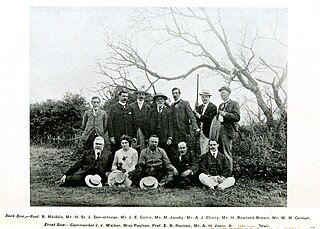
Horace St. John Kelly Donisthorpe was an eccentric British myrmecologist and coleopterist, memorable in part for his enthusiastic championing of the renaming of the genus Lasius after him as Donisthorpea, and for his many claims of discovering new species of beetles and ants. He is often considered to be the greatest figure in British myrmecology.
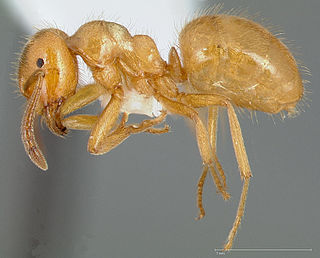
Lasius latipes is a species of ant in the genus Lasius. It is native to the United States.
Lasius murphyi is a species of ant in the genus Lasius. It is endemic to the United States and Canada.

Lasius arizonicus is a species of ant belonging to the genus Lasius, formerly a part of the genus Acanthomyops. Described in 1917 by Wheeler, the species is native to the United States.
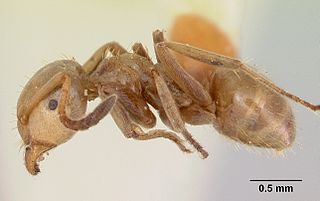
Lasius bureni is a species of ant belonging to the genus Lasius, formerly a part of the subgenus Acanthomyops. Described in 1968 by Wing, the species is native to the United States.

Lasius californicus is a species of ant belonging to the genus Lasius, and was formerly a part of the genus Acanthomyops. Described in 1917 by Wheeler, the species is native to the United States.

Lasius claviger, or the smaller yellow ant, is a species of ant belonging to the genus Lasius, formerly a part of the genus Acanthomyops. Described in 1862 by Roger, the species is native to the United States.
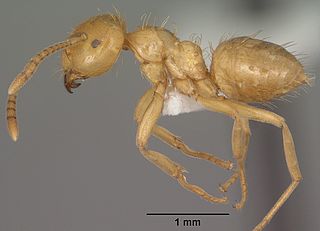
Lasius colei is a species of ant belonging to the genus Lasius, formerly a part of the genus Acanthomyops. Described in 1968 by Wing, the species is native to the United States.
Lasius coloradensis is a species of ant belonging to the genus Lasius, formerly a part of the genus Acanthomyops. Described in 1917 by Wheeler, the species is native to the United States. The queens of will make a claustral chamber and hibernate, laying eggs in the spring.

Lasius creightoni is a species of ant belonging to the genus Lasius, formerly a part of the genus Acanthomyops. Described in 1968 by Wing, the species is native to the United States.
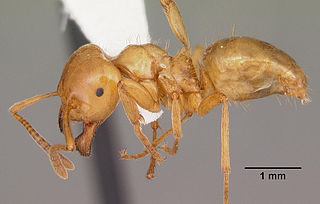
Lasius interjectus, commonly known as the larger yellow ant, is a species of ant belonging to the genus Lasius, and was formerly a part of the genus Acanthomyops. Described in 1866 by Mayr, the species is native to the United States.
Lasius mexicanus is a species of ant belonging to the genus Lasius, formerly a part of the genus Acanthomyops. Described in 1914 by William Morton Wheeler, the species is native to Mexico.

Lasius occidentalis is a species of ant belonging to the genus Lasius, formerly a part of the genus Acanthomyops. Described in 1909 by Wheeler, the species is native to the United States.

Lasius plumopilosus is a species of ant belonging to the genus Lasius, formerly a part of the genus Acanthomyops. Described in 1941 by Buren, the species is native to the United States, notably from the state of Iowa.
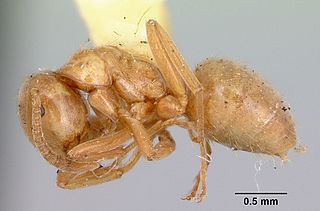
Lasius pubescens is a species of ant belonging to the genus Lasius, formerly a part of the genus Acanthomyops. Described in 1942 by Buren, the species is native to the United States.
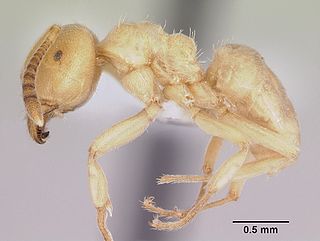
Lasius subglaber is a species of ant belonging to the genus Lasius, formerly a part of the genus Acanthomyops. Described in 1893 by Emery, the species is native to the United States and Canada.

Lasius neoniger, also known as the turfgrass ant, Labour day ant, cornfield ant or nuisance ant, is a species of ant in the genus Lasius. Found in North America, the species is common in the eastern United States and Canada, though they can be found all over the continent. They are usually light brown in color, with a slightly darker head.
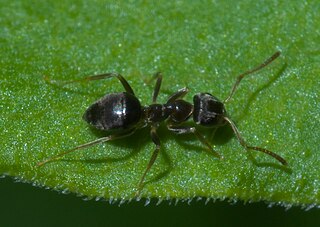
Lasiini is a tribe of ants in the family Formicidae. There are about 10 genera and more than 450 described species in Lasiini.
















